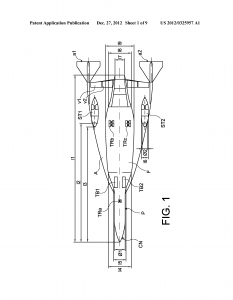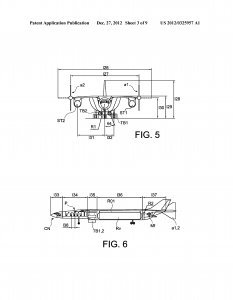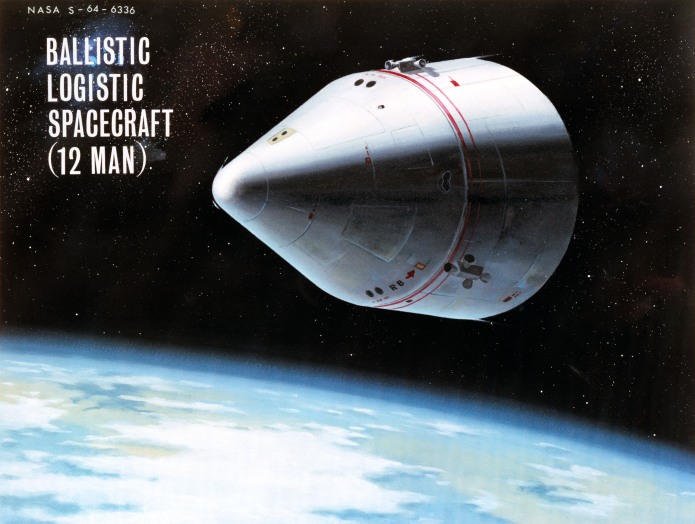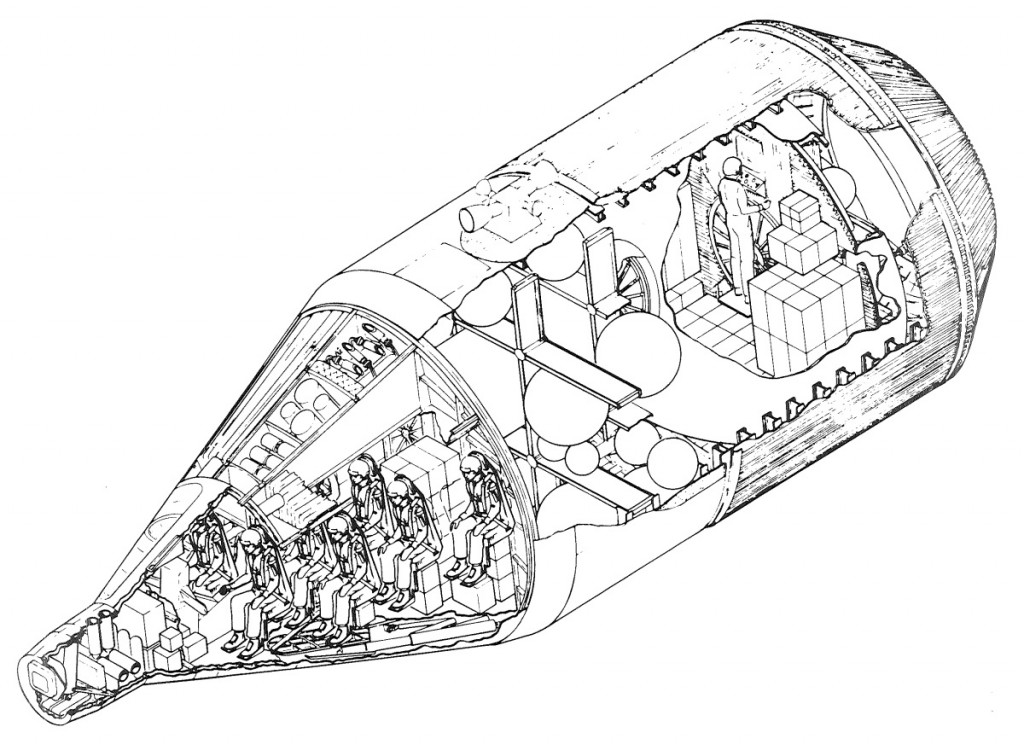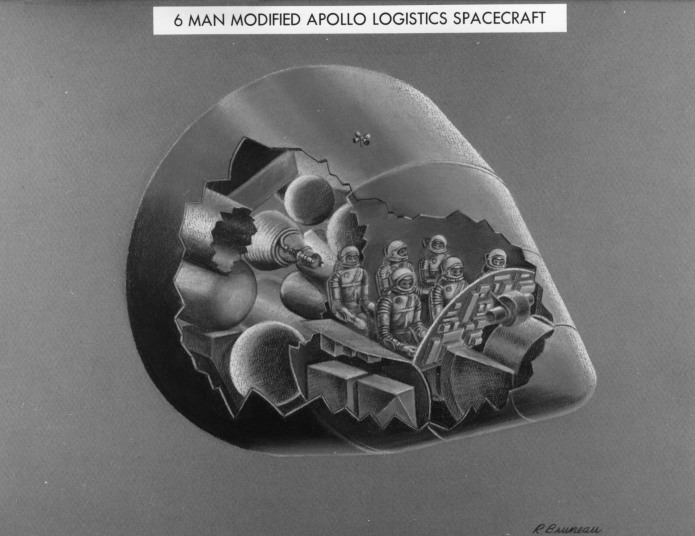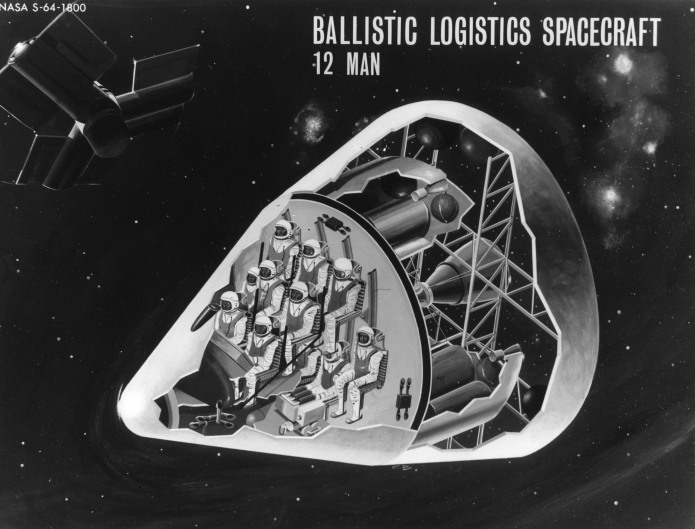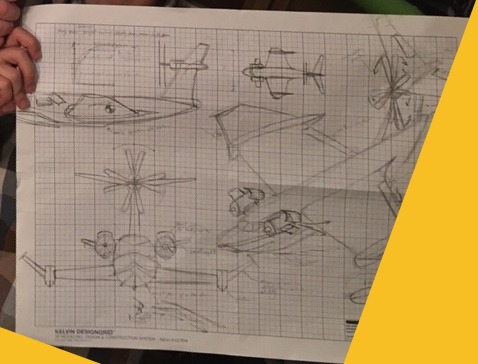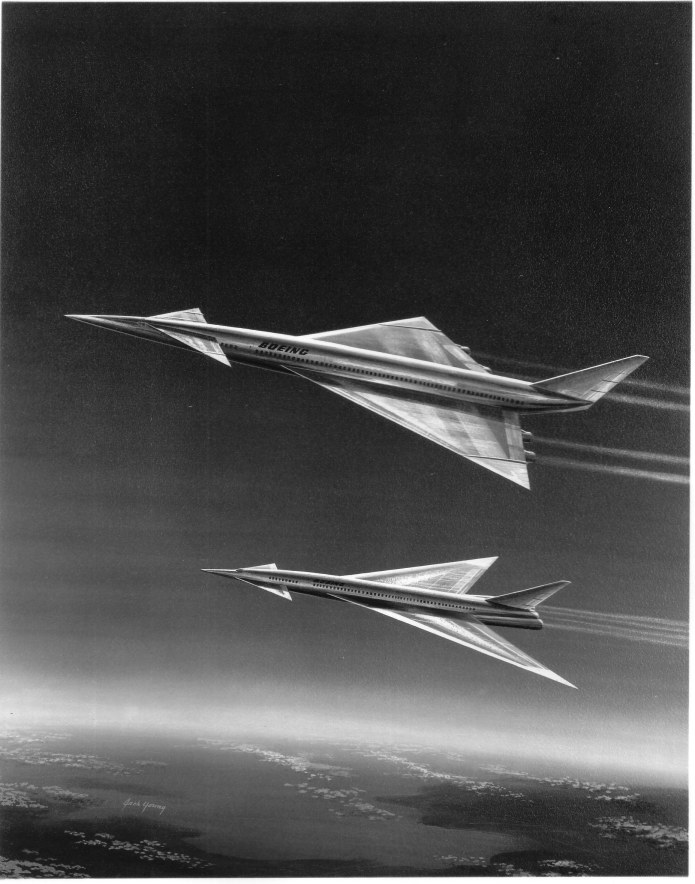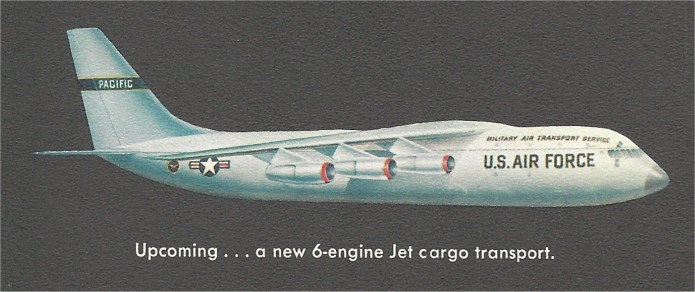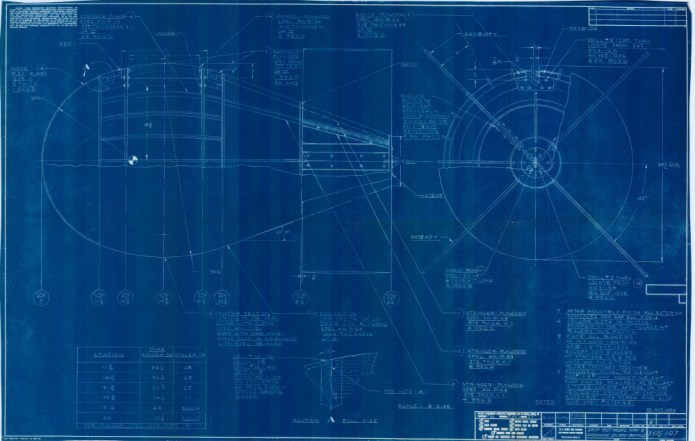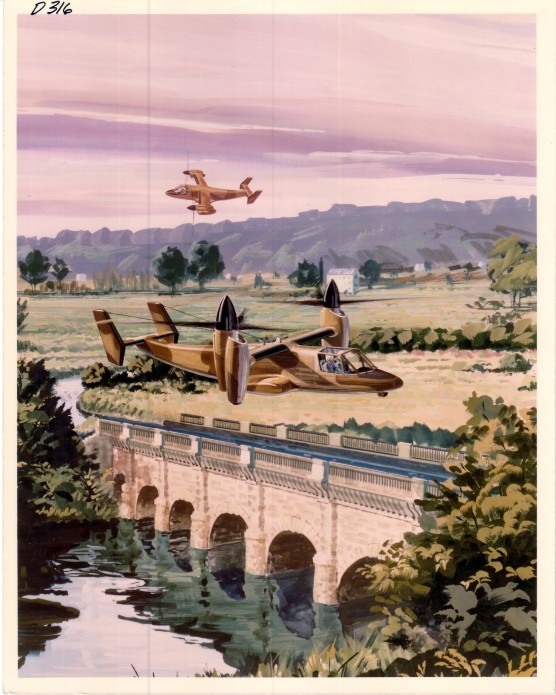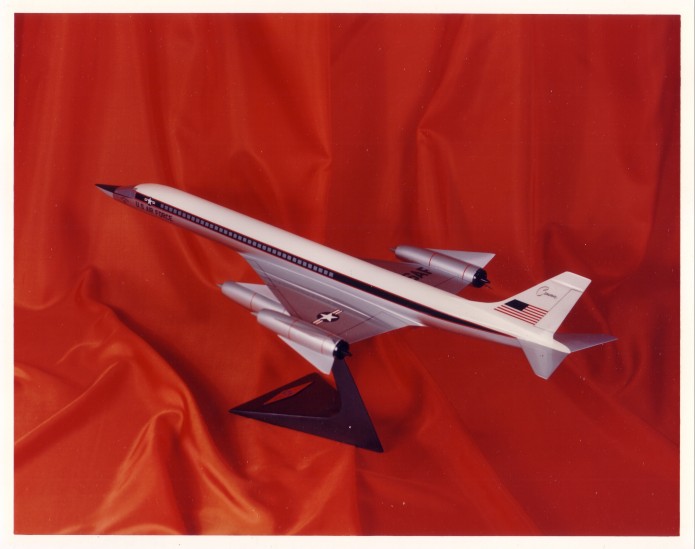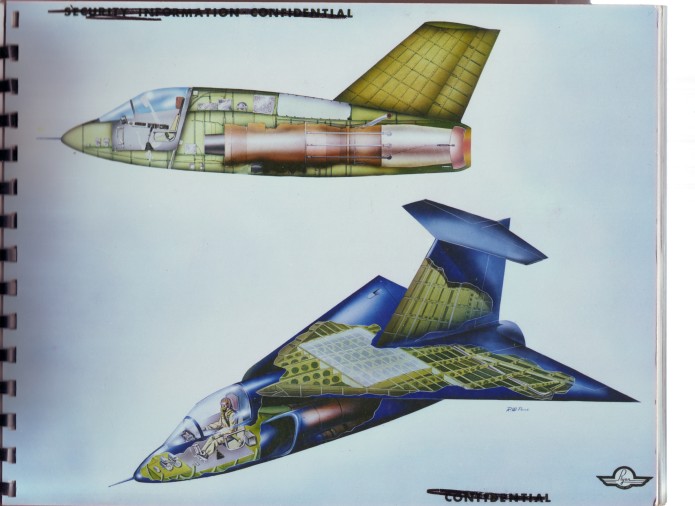A few months ago, Airbus Defence and Space Sas received a US patent for a nearly hypersonic passenger transport. The vehicle has a number of different engines… rocket engines for vertical boost and acceleration, ramjets for hypersonic cruise, turbojets for subsonic flight including takeoff and landing. It would take off conventionally with turbojets, fire the rocket to shoot almost vertically to about 35 kilometers altitude (going supersonic in the process), then level off and cruise under ramjet power at Mach 4.5. The extreme altitude, about 3 times higher than normal jetliner traffic, would mean that the sonic boom should be greatly attenuated by the time it got to the surface.
The wingtip fins would rotate through 90 degrees to maintain center of pressure from subsonic through supersonic.
Unusually for a patent, this one provides dimensions. Fuselage length (dimension 11 in Figure 1) is 52.995 meters; overall length (dimension 110, Figure 3) is 57.63 meters; maximum span (dimension 126, Figure 5) is 27.188 meters.
Interestingly, the design looks like a mishmash of WWII-era designs… the “gothic wing” designed by Michael Gluhareff of Sikorsky merged with the wingtips of the Blohm & Voss P.208-2 or Skoda-Kauba SL-6.
This is US Patent 907661B2. At the moment the Google page for this patent seems a little non-functional; the PDF of the patent won’t download for me. Fortunately, the page for the patent application is functioning just fine. You can download the PDF file of the patent application directly from THIS LINK RIGHT HERE.
Some pages of diagrams:
Here is a video description of the design.
The interior views of the vehicle show one of the problems with rocket-boosted transport aircraft: The majority of the interior volume isn’t people and cargo, but propellant.
Much more aerospace stuff is available via the APR Patreon. If this sort of thing interests you, please consider signing up… not only will you help fund the search for obscure aerospace history, you’ll gain access to a lot of interesting stuff, not available elsewhere.
